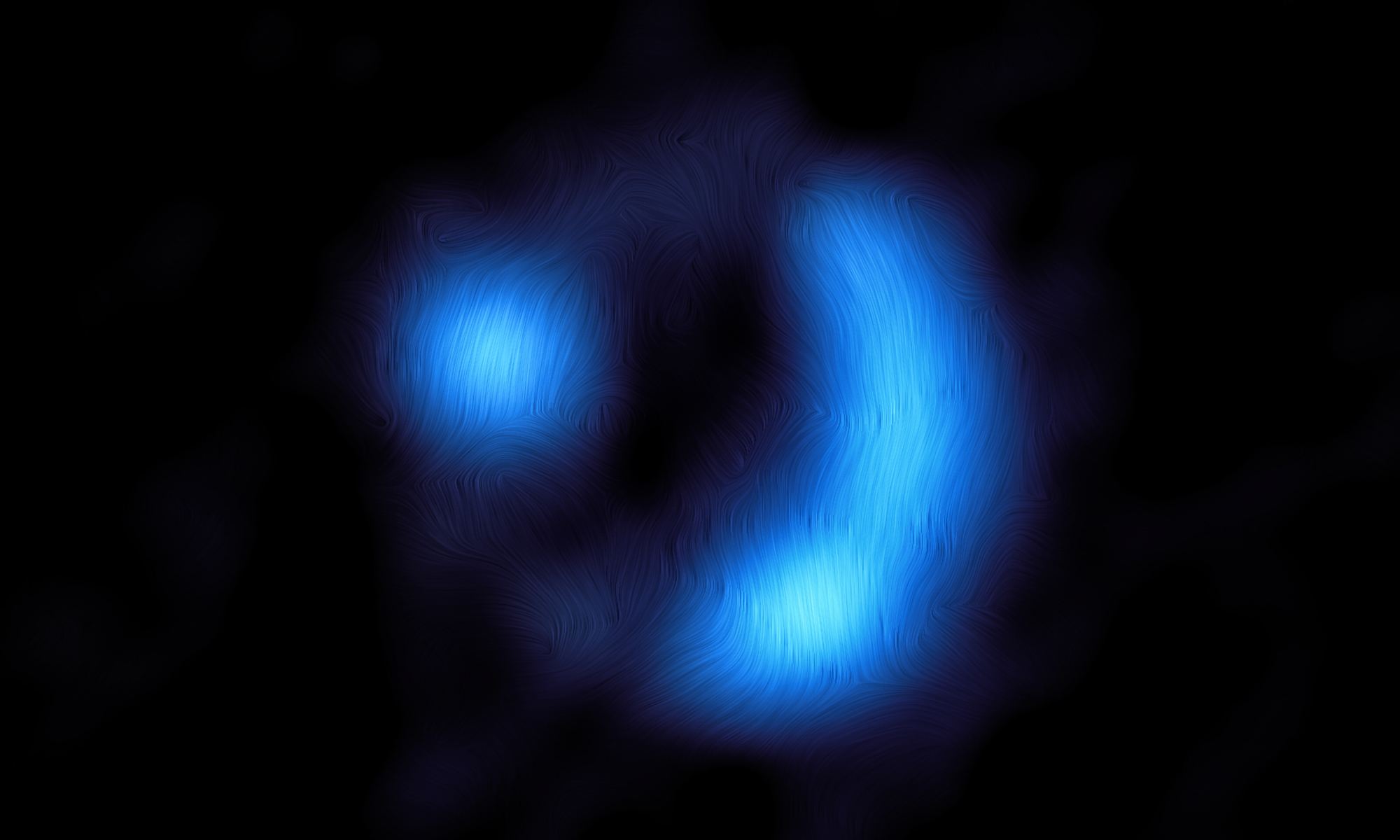The galaxies in our local Universe all have magnetic fields. Galactic magnetic fields can be generated by ionized gas within a galaxy, and these same magnetic fields affect the evolution of galaxies. But while modern galaxies have magnetic fields, did early ones? Astronomers are still trying to understand how galactic magnetic fields arise in young galaxies, but this can be a challenge without observational data. Now a team using data from the Atacama Large Millimeter/submillimeter Array (ALMA) has observed the magnetic field of a galaxy when the Universe was just 2.5 billion years old. The galaxy is known as 9io9. It takes 11 billion years for its light to reach us, making it the most distant galaxy for which we have observed a magnetic field.
This new observation is an amazing feat, particularly given the fact that galactic magnetic fields are invisible. They don’t emit light we can detect, but they can affect gas and dust that does emit light. In this case, since the 9io9 galaxy is particularly dusty, the team focused on light coming from dust grains in the galaxy. Light emitted or scattered by the dust grains tends to be polarized in line with the orientation of the dust grain. Since the dust grains tend to align along the galactic magnetic field, the light we see from the dust is also aligned with the magnetic field. By observing radio light tuned to the dust, the team was able to map the magnetic field of the galaxy.

But here’s the real kicker. While astronomers have used polarized light from dust grains to measure magnetic fields before, this particular galaxy is so distant that the light of dust is extremely faint. At 11 billion light-years, this light should be too dim to observe. But 9io9 is a lensed galaxy. It happens to be directly behind a closer galaxy from our point of view, so its light is gravitationally lensed by the closer galaxy, which makes it appear brighter than it would on its own. So what the team really did was to capture light from dust in a distant galaxy that was focused by the gravity of a closer galaxy, and used the polarization of that light to map a galactic gravitational field!
What they found was that this young galaxy already had a fully-formed magnetic field. It’s about a thousand times weaker than Earth’s magnetic field, but it extends over 16,000 light-years. Now the question is how galaxies can generate magnetic fields early on. One idea is that early star formation accelerates the formation of a magnetic field by ionizing gas in the galaxy. This could also create a feedback loop where the magnetic field helps compress the gas to accelerate star formation.
There is still much to learn about galactic magnetic fields, but this new study shows that they form early, making them an important factor in the evolution of stars and galaxies.
Reference: Geach, J. E., et al. “Polarized thermal emission from dust in a galaxy at redshift 2.6.” Nature (2023).

